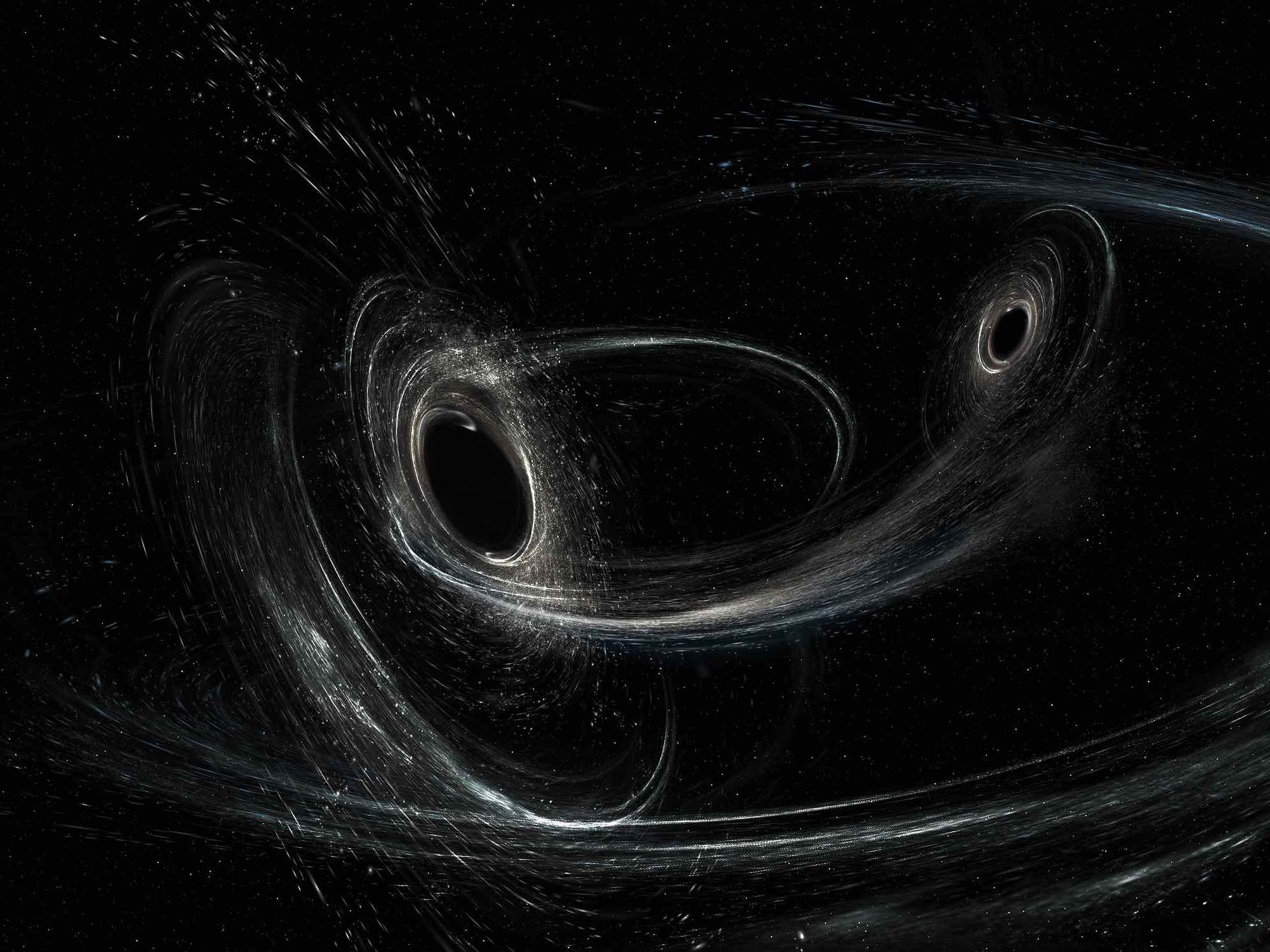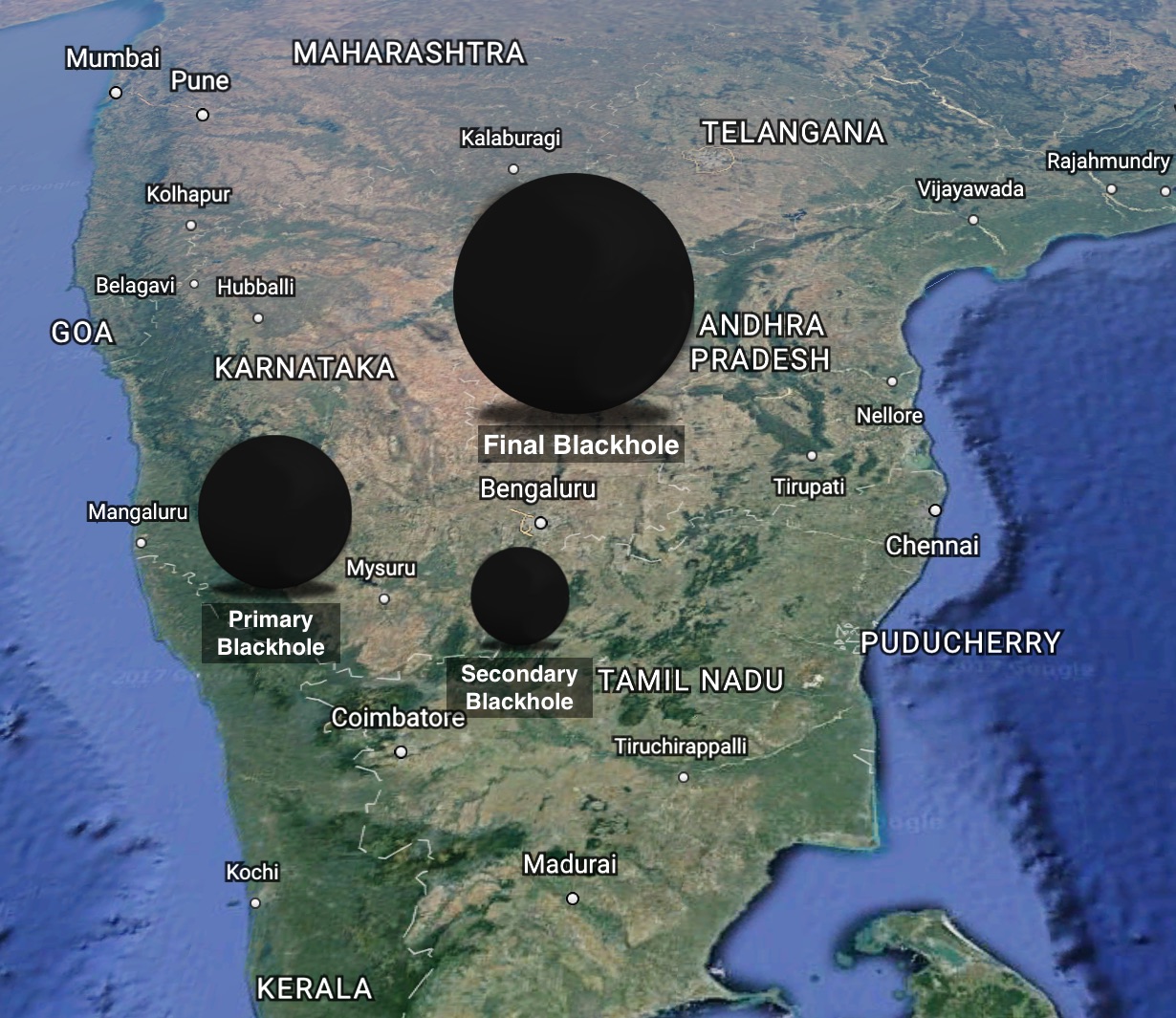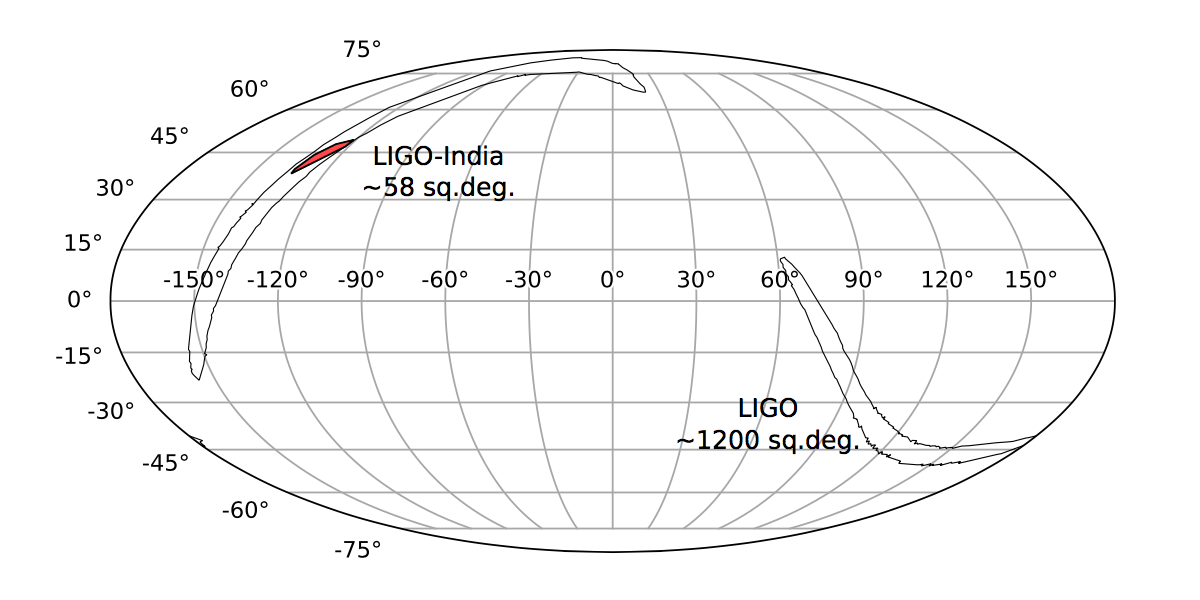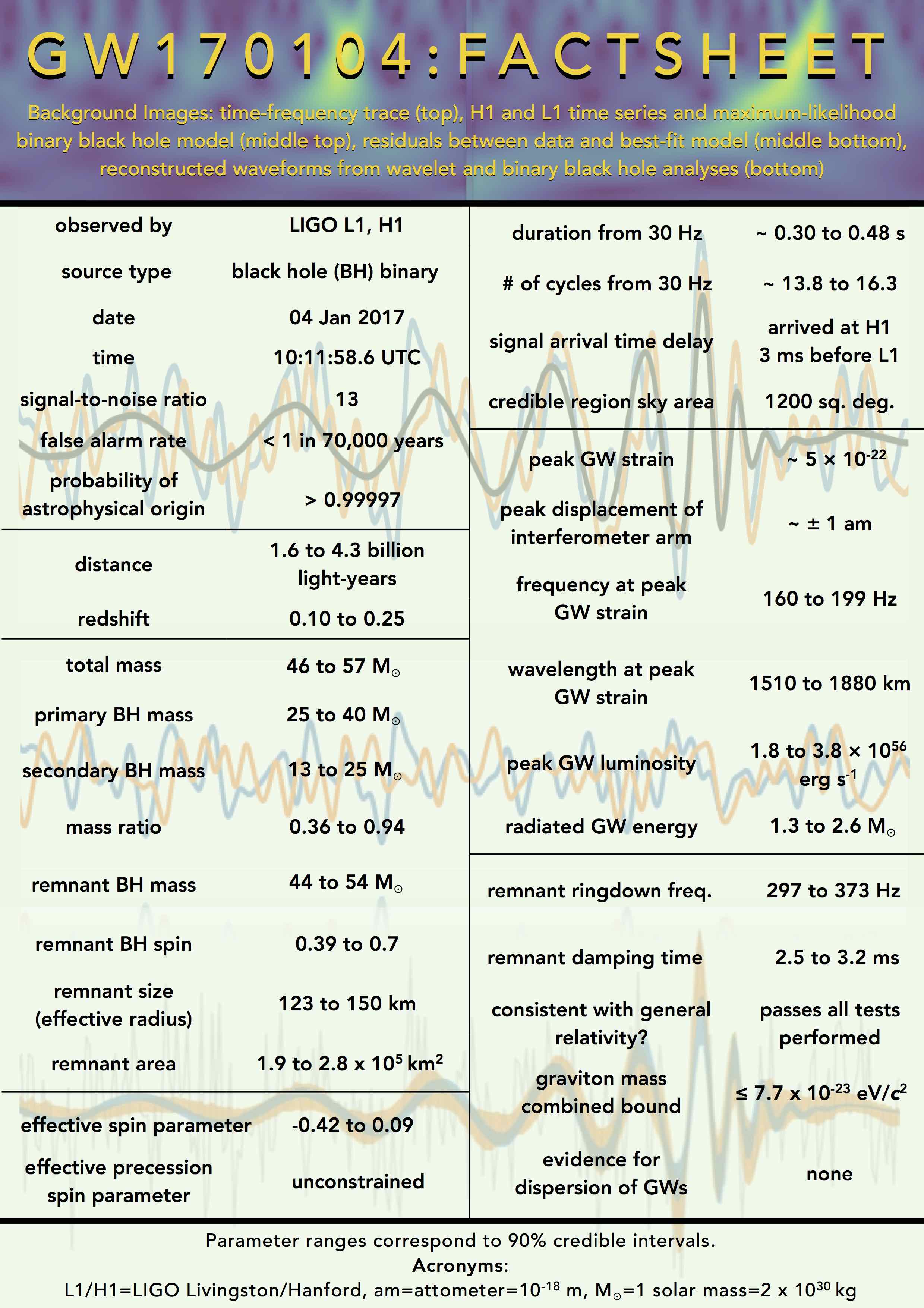Detection of GW170104
On January 04, 2017 at 03:42PM IST the LIGO detectors in Hanford, Washington and Livingston, Louisiana detected a signal from the coalescence of two black holes, with masses 31.2 and 19.4 times the mass of the sun, merging into a more massive, rapidly rotating black hole that is 48.7 times the mass of the sun. The event happened nearly 3 billion years ago, lasted in LIGO's frequency band for about a second and released about 2 solar mass worth of energy in that short period.

The GW170104 detection paper: Physical Review Letters 118, 221101
Specific contributions by IUCAA researchers
- Matched Filtering
- A key analysis technique needed for this detection, pioneered at IUCAA
- Several refinements to the original analysis (e.g., to include multiple detectors)
- Development of efficient analysis techniques
- Estimation of Black Hole Binary parameters
- In improving the estimation accuracy of Black Hole spins
- Testing Einstein's General Theory of Relativity
- Detector Characterisation
- Application of Machine Learning to classify instrumental & astrophysical transients
- Development of an earthquake monitoring system
- Development of digital filters for LIGO seismic control system
- Application of Machine Learning for rapid documentation search
- Efficient methods for handling instrumental artefacts
- Electromagnetic followup with CZTI instrument onboard AstroSat
- Towards building a LIGO detector in India
- To dramatically improve the accuracy for estimation of location and orientation
- Developing search algorithms for Stochastic backgrounds
- A stochastic background from binary black-holes may be detectable by advanced LIGO in the next few years
Sizes of the black holes compared to the size of India

Gravitational Wave signal from merging black holes
Parameters of the detected signal
Masses:
Masses of primary black holes: 31.2 and 19.4 (solar mass units)
Effective spin parameter primary black holes: -0.12
Mass and spin of the merged BH: 48.7 (solar units) and 0.64 (dimensionless)
Distance of event:
880 Megaparsec or 2.9 billion Light Years (2.715e+22 km)
Gravitational Wave signal:
Date of Arrival: 04 Jan 2017
Time of Arrival: 03:42 PM IST
Energy released in the form of GWs: equivalent of 2 solar mass (remember E = mc2)!
What next?
- More candidate events found in the second observation run are awaiting confirmation
- The Virgo detector in Pisa, Italy is expected to come online in a month or two, which is significantly improve localisation accuracy
- LIGO detectors will be going through an extended upgrade cycle
- Astronomy community is all excited about following up a gravitational wave source with conventional electro-magnetic ground/space based telescopes
- LIGO-India is making rapid progress
- In short, a lot to expect in the coming months/years


